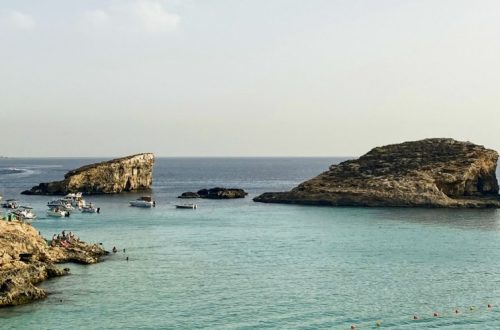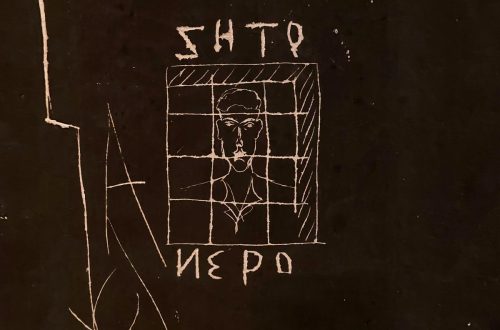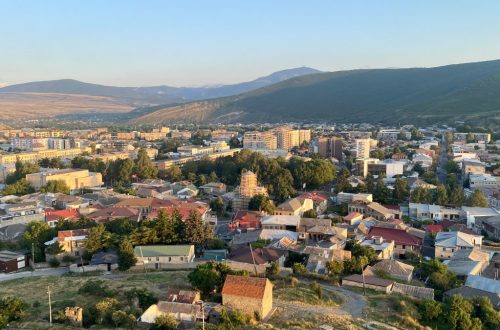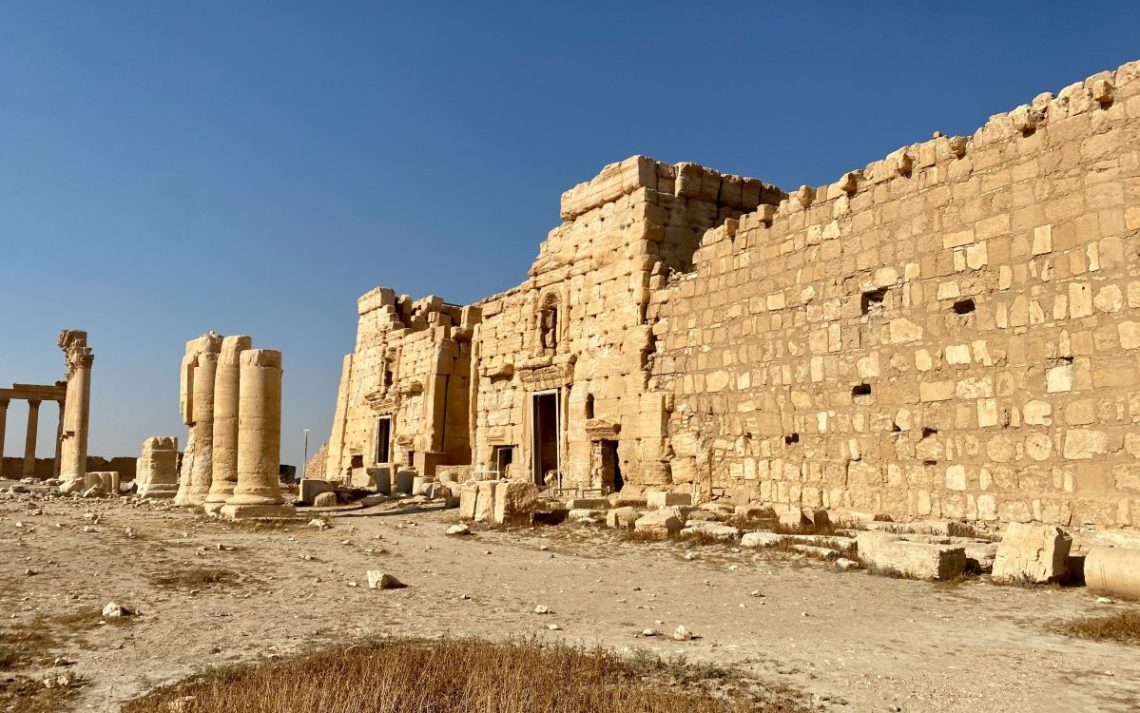
How Does it Feel Visiting Palmyra, Syria in 2024
Palmyra is a place with undeniable history and culture that was unfortunately met with tragedy and destruction in the past few years. In fact, it might even cease to exist in the foreseeable future.
I recently had the chance to be among the few people visiting Palmyra, and there is no easy way to explain the feelings I felt during this one-day trip. I hope that this guide will be able to help you experience the “Venice of the Sands” from my point of view.
If you need more information to be persuaded about traveling to Syria, you should read my guide with 25+ compelling reasons to Visit Syria in 2024.
A Little Bit of History?
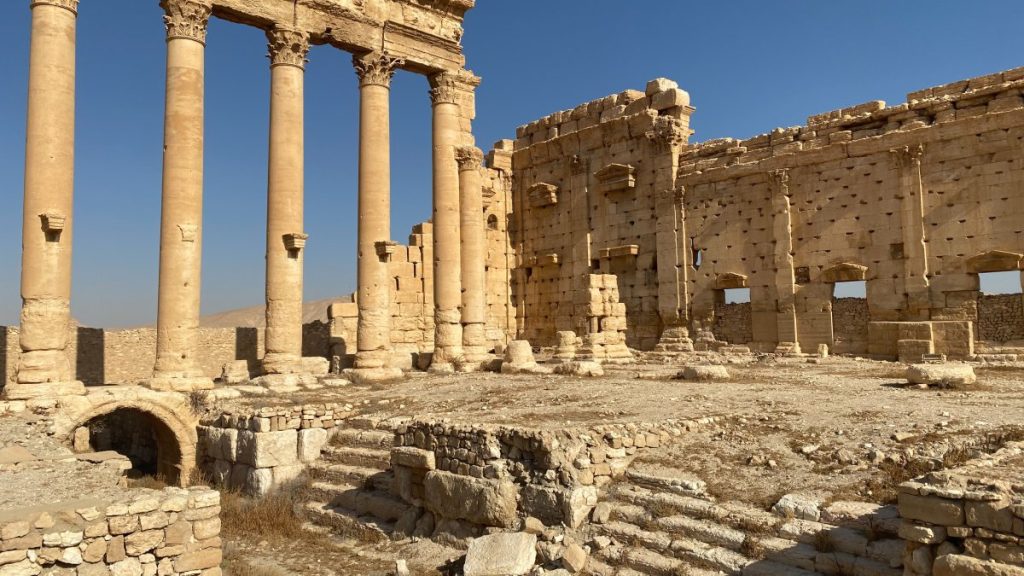
An oasis in the Syrian desert northeast of Damascus, Palmyra contains the remnants of a great city that used to be one of the most important cultural hubs of the ancient world. It stood right on the Silk Route, bringing different cultures together and facilitating trade.
The architectural beauty of the city is a blend of Graeco-Roman and Persian influences. Known also as “Venice of the Sands”, Palmyra reached its peak in the 2nd and 3rd centuries, growing wealthy from caravans that carried silk from China, spices from India, and other goods from the Eastern world to the Western world and vice versa.
One of the most fascinating aspects of the history of Palmyra is the story of Queen Zenobia She was the queen of Palmyra, taking power in the year 267 AD after her husband’s assassination and ruling until her ultimate capture by the Romans in 271 AD.
Often drawing comparisons to Cleopatra, Zenobia is celebrated as one of the most powerful women in history. She led a significant military expansion during her reign, which, at its peak, spread from modern-day Iraq to Egypt.
However, she met her downfall when her ambitions drove her to confront the Roman Empire, her former ally. After a series of battles, Zenobia was finally captured and taken to Rome as a prisoner. The exact details of her final years remain a mystery, and there is much speculation over her death. However, one thing is for sure: Her name is synonymous with the city of Palmyra.
With time, the political dynamics of the region changed, and Palmyra lost its glory. The city was conquered, traded, abandoned, and rediscovered. It now stands in ruins and has been recognized as a UNESCO World Heritage Site since 1980.
Palmyra During the Syrian Crisis
The next part of the story is not a happy one. However, before visiting Palmyra, you need to know what has happened there in the last few years amid the Syrian Crisis.
In 2015, Palmyra became a battleground, caught in the crossfire between the Syrian government and the ISIS forces. The ancient city didn’t escape the chaos and was captured twice by ISIS forces.
During their reign of terror, ISIS destroyed several centuries-old monuments, such as the Temple of Bel, the Arch of Triumph, and the amphitheater. Our guide told us that they decided to do so when they knew that they would lose the city – A last act of cultural extermination.
A few years later, the Syrian government recaptured Palmyra, and restoration efforts have been made. However, the journey has been slow and painstaking. Regaining its former glory is a massive task, considering the extent of the damage. However, locals are hopeful that the city will become again the tourism hub that it once was.
The Story of a Local: Living in ISIS-Captured Palmyra
If you have been reading my blog for a while, you’ll probably know that I love speaking with locals and sharing their stories. I was speaking to a young local man who described to me the horrors they faced during the reign of ISIS.
He told me that nobody expected ISIS to be able to get control of the city, and they were caught off-guard. Men were forced to shave their heads and women to cover everything but their eyes. They were forced to change the way they prayed and throw away everything they owned that might had links to the West (even simple t-shirts). The disobedient were punished severely.
I could not help but stand speechless while this young man described to me what he’d been through. What intrigued me most, though, was the fact that he was saying those things with a smile on his face. It took me a lot of time to think about it.
Maybe it was because someone was finally listening to his story. Maybe it was because it was all over, and he was finally able to start his university studies in tourism management.
One thing is certain: a stranger my age approached me to help him improve his English, and he reminded me why I travel. To help people’s stories get heard. I made a new friend that day.
Is it Safe to Travel to Palmyra in 2024?
It’s understandable that you might have concerns about safety when considering visiting Palmyra or Syria in general. Safety is, after all, a major consideration for any travel adventure.
To address this question, I’ve pulled together reliable, up-to-date information regarding the safety situation in Syria in my guide on visiting the country.
In comparison to its past, Palmyra has seen significant improvements in its security situation over the last few years. Due to its location deep in the Syrian desert, it took more time for Palmyra to be deemed safe than other major cities in the country.
Visiting Palmyra requires a special permit, which your local tour operator will have to apply for. Furthermore, the road to the city has a lot more checkpoints, but you will not feel unsafe at any point of it.
One of the first things that has to come to your mind when planning a trip is insurance.
Safetywing’s Nomad Insurance is one of the best options available out there. With a maximum coverage of 365 days, they are a great option whether you are a Nomad or not! They offer very low rates but excellent coverage and immediate support (in a few minutes!). The best part? Nomad Insurance can be purchased even if you have left your home country already.
Lastly, they also cover extreme sports, something that can come in very handy if you are an adventurous soul.
*please note that Nomad Insurance does not cover travel to Syria. However, they are an excellent option for the rest of your trips.
What is the Best Time of the Year to Visit Palmyra?
If we take a closer look at Palmyra’s weather, you’ll note distinct seasons that should guide your travel planning when visiting Palmyra. But the headline here is travel between March and May.
These are the spring months that offer comfortable weather for exploring the ruins and other tourist attractions during the daytime. Alternatively, consider visiting Palmyra between September and November for similar weather conditions. The desert isn’t burning during these months, and you will enjoy your trip a lot more.
However, If you decide to visit Palmyra in the Summer Months, you’ll be greeted with incredible heat and humidity. Most travel agencies will be ready for that and will schedule your trip early in the morning to avoid getting a heat stroke (Thank you, Golden Team, for taking the best care of us).
How can I reach Palmyra in 2024?
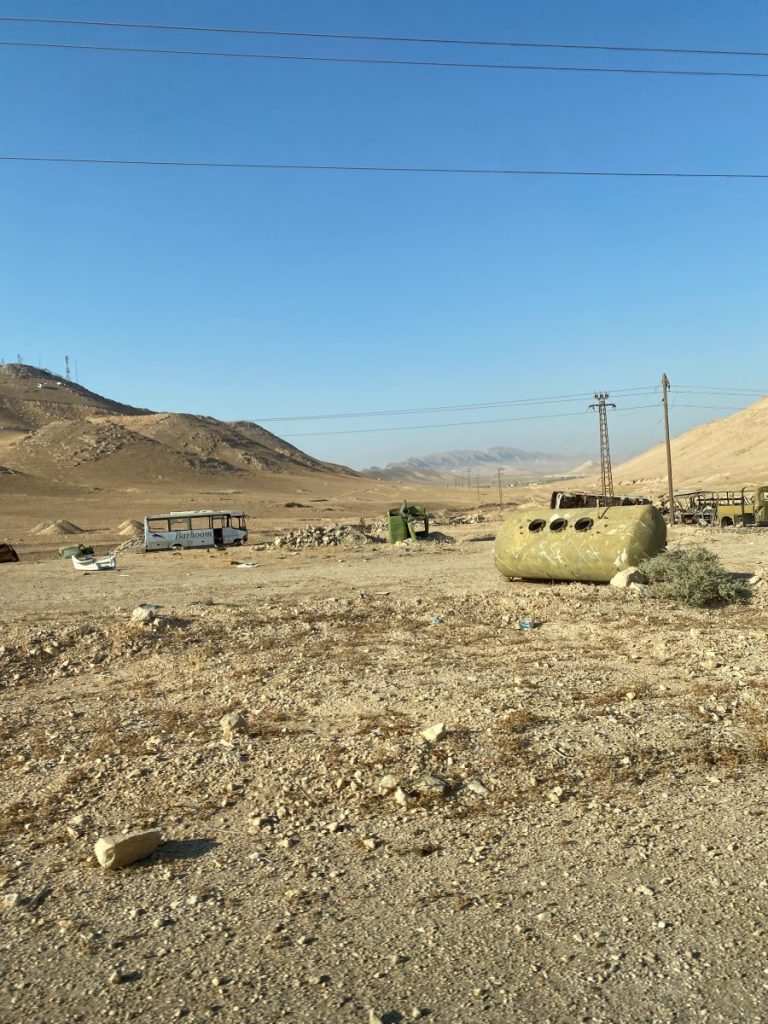
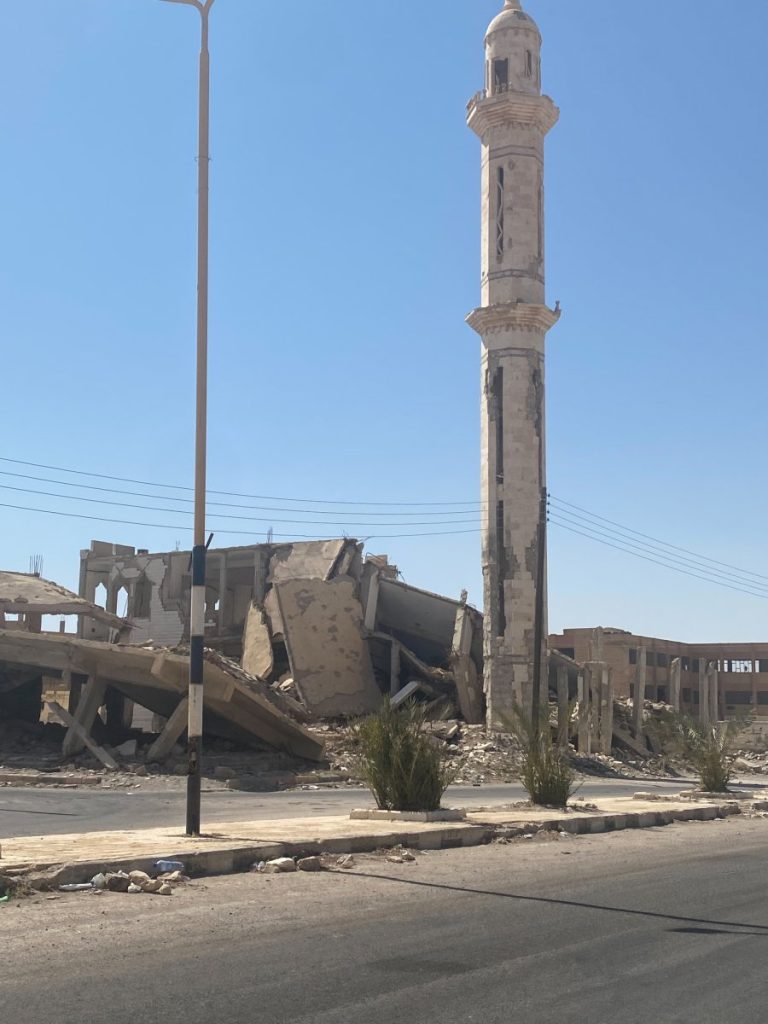
Due to the country’s complexity, it’s required to organize your journey through a licensed travel agency.
The best travel agency option, in my opinion, is Golden Team Syria. They are best known for their thorough work in ensuring all travel details are just right. I cannot say enough good things about them. They had everything ready for us before even going there, and they provided us with the best guide and driver we could’ve asked for.
So, now let’s get into the details. As I wrote above, due to the region’s complexity and the weather in the desert, you will be traveling to Palmyra on a morning half-day trip. Most agencies choose to base their tourists in Homs, a city just a couple of hours’ drive from Palmyra. You will visit the city in the morning, before coming back to Homs by lunchtime.
The Best Things to Do When Visiting Palmyra
I was very surprised to find out that there are a lot more things to Palmyra than the ruins themselves. Below are some of the things I appreciated the most during my trip.
1. The Palmyra Road Sign
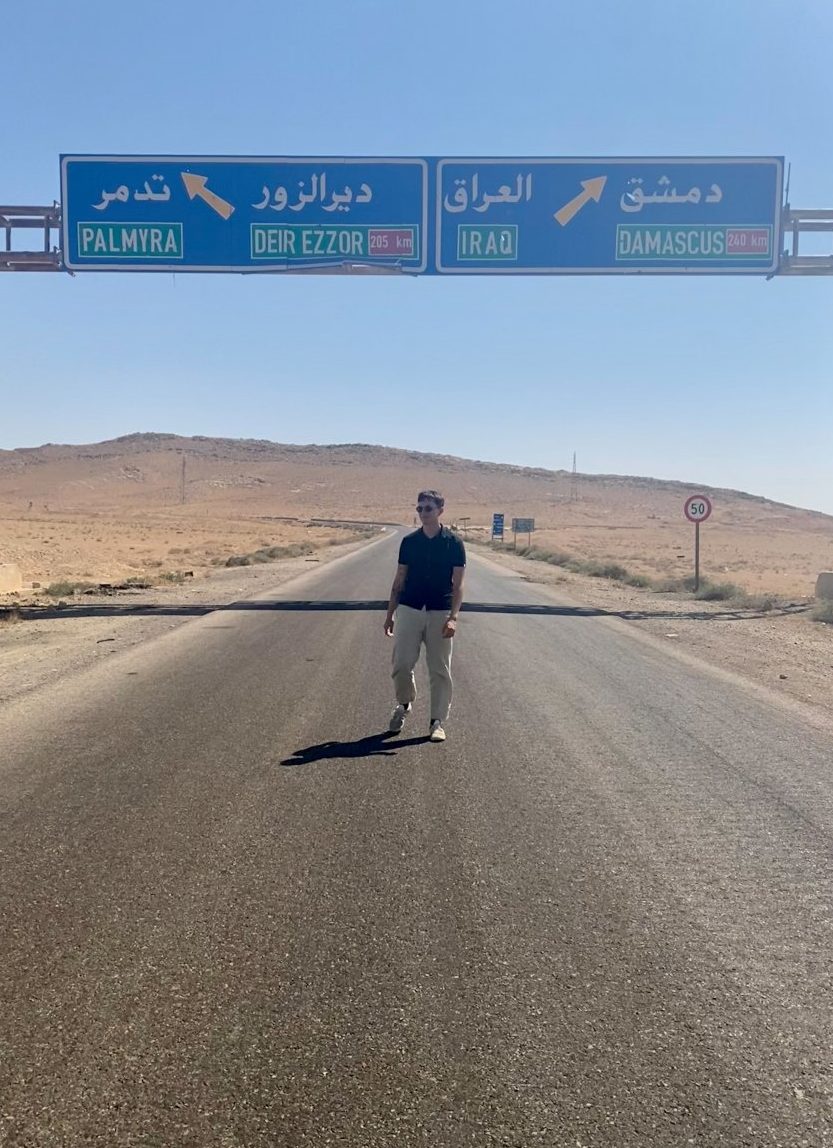
If you have ever searched on Instagram about Palmyra, you’ve probably seen a particular image all over your Instagram feed; the famous road sign. This iconic symbol is basically an unofficial entry to the city.
Yes, it’s a sight that’s become synonymous with this historic location and one that tourists love to capture and share online. When you see this sign, don’t miss the opportunity to take your photo with it. I didn’t and it felt really good!
The Museum of Palmyra
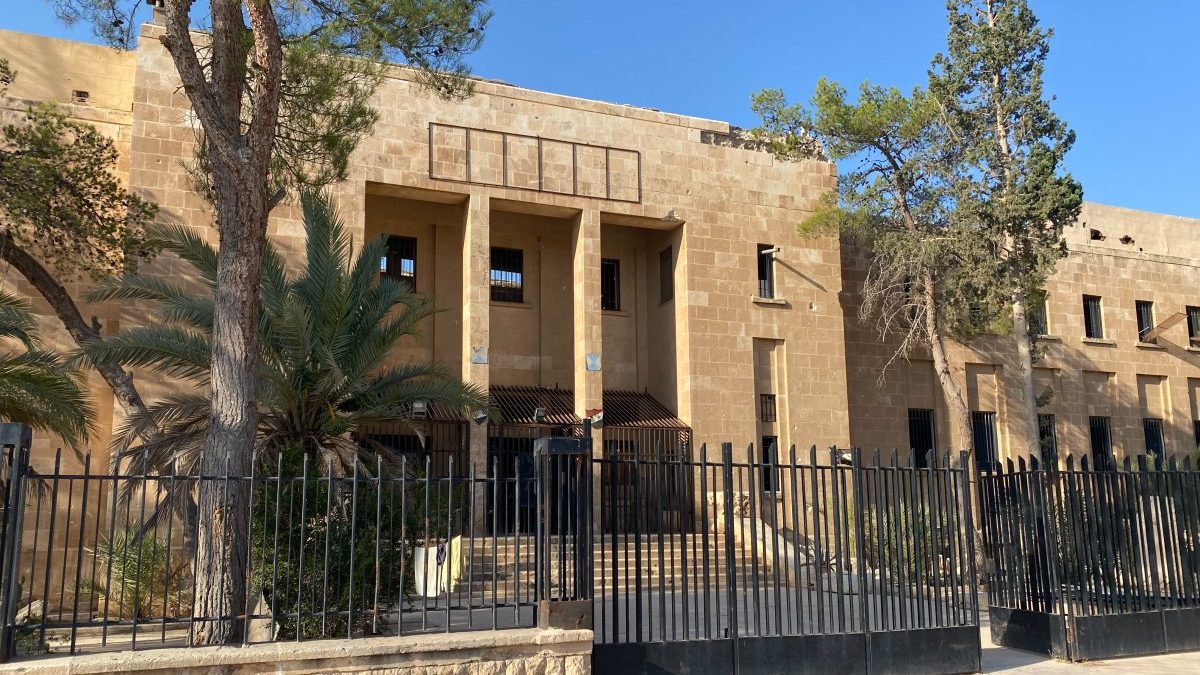
The first stop during our day trip to Palmyra (and most probably yours, too) was the Palmyra Museum. It is undoubtedly not what you’d expect it to be. And let me explain what I mean.
What used to be a big (and packed with tourists) building is now left in ruins. Once you enter, you’ll see torn-down walls and priceless ancient artifacts destroyed. What stands out, though, is a graffiti of the last manager of the museum, and his story is very inspiring.
Khaled al-Asaad dedicated over five decades of his life to studying and preserving the antiquities of Palmyra. His passion was so deep that he lived on the historical site itself, introducing its beauty and significance to people from all around the world.
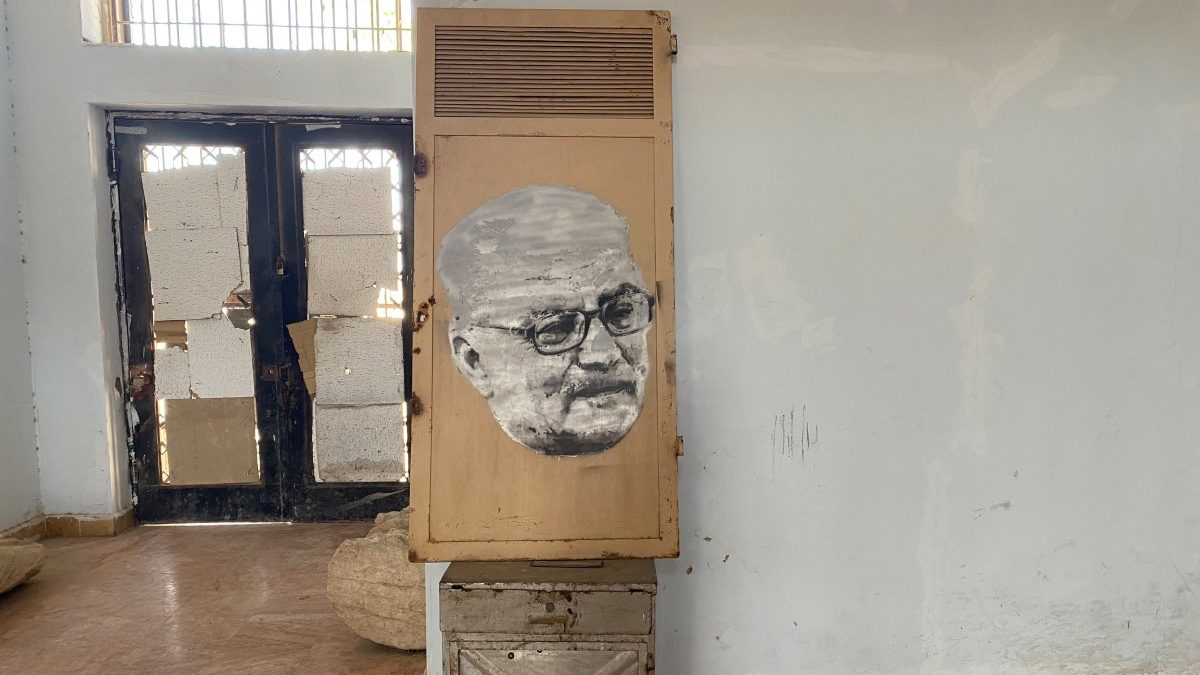
In 2015, following the invasion of ISIS, Khaled was captured and interrogated for information about hidden treasures and artifacts. ISIS believed that there were hidden treasures along the sight (That’s why you’ll see holes dug everywhere).
Despite the intense pressure, he remained resolute and refused to reveal any information, protecting the ancient relics until his last breath. This heroic act led to his tragic execution by ISIS, but his story lived on.
Today, at the Palmyra Museum, you’ll find a graffiti dedicated to Khaled – an act of appreciation for his dedication and the ultimate price he paid in the defense of cultural heritage.
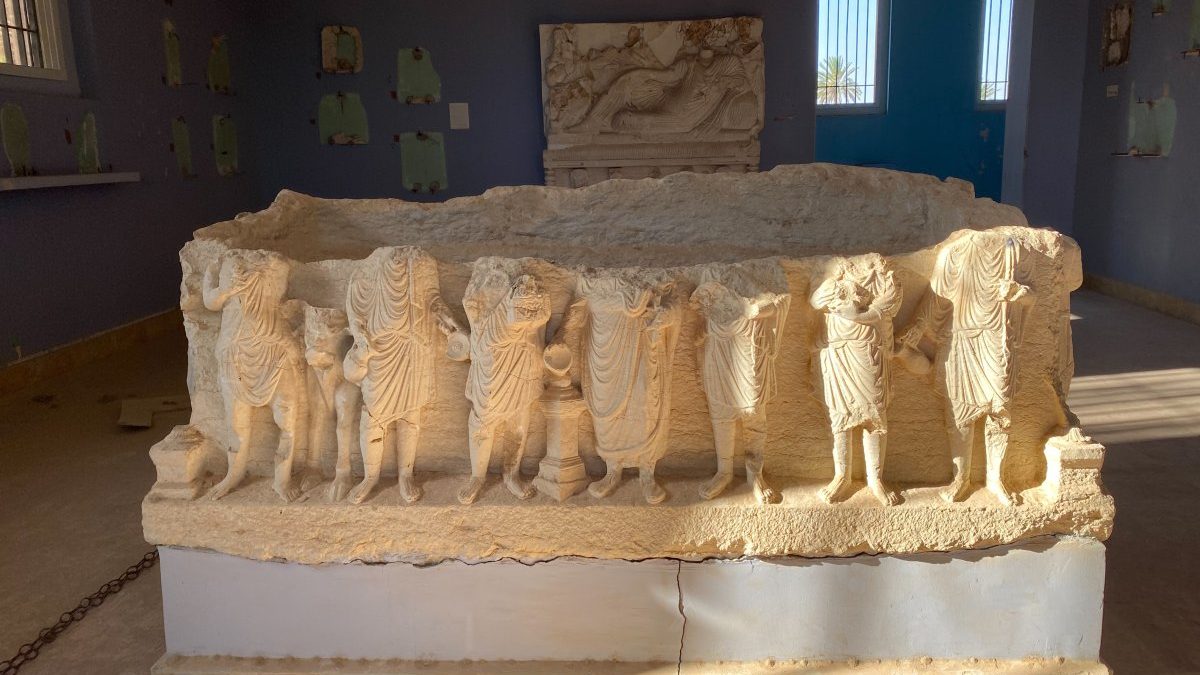
The museum’s exhibits mainly consist of statues. What made me very emotional was their condition. Most of them were beheaded by ISIS soldiers because they were considered Pagan. Many others were removed from the walls and thrown on the museum’s floors. Just imagining that a wrong step could lead to the further destruction of thousands of years old artifacts felt bizarre to me.
Inside the museum, I was surprised to find postcards and books sold, not in a gift shop, rather than on a table from the museum’s guard. Syria has been struck by a horrible inflation crisis, and tourism is one of the only ways to help locals make ends meet. So, please, buy a few things while you’re there.
Before leaving, we had a long conversation with the people working there. We talked about life, and they told us how love should be connecting people. It was a nice little touch that I remember with a smile on the face.
Entering the Ancient City of Palmyra
After our visit to the museum, it was time to get into the main sight. Below, I’ve gathered the most important monuments we saw during our visit. To make it easier, I wrote them in the correct order from the entrance.
1. The Temple of Bel

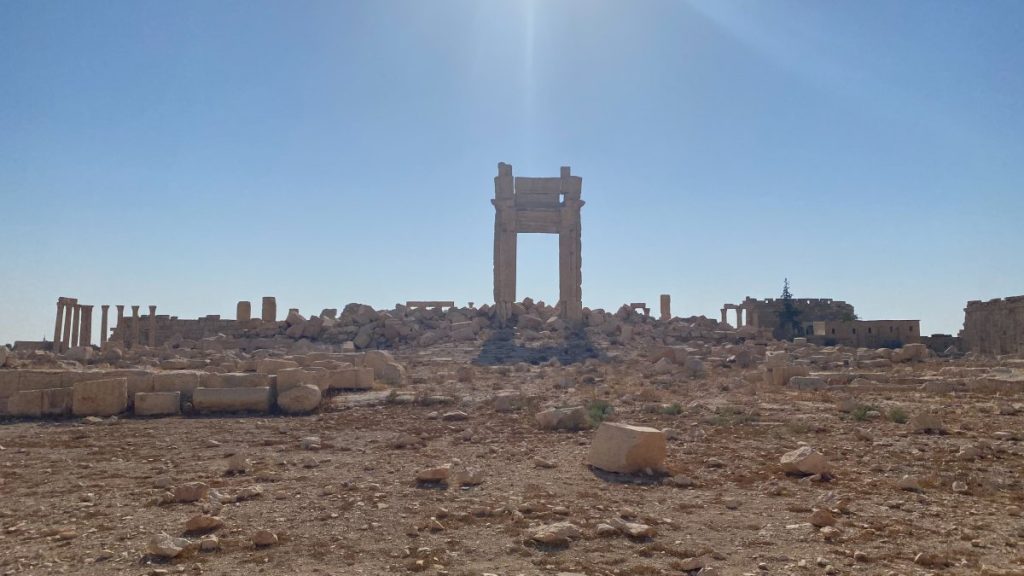
Once we were inside, we headed to the Temple of Bel, built around 32 AD. It carries the name of the Mesopotamian god Bel, who was one of the key deities in the Palmyrene pantheon. Our guide compared his importance to Zeus’.
The temple used to be impressively large and enclosed by a massive wall that fashioned the outer façade. In contrast to its former glory, the Temple of Bel was unfortunately targeted and destroyed by ISIS in 2015.
Satellite images released at that time showed the main building of the temple reduced to rubble, leaving historians and admirers worldwide in a state of profound shock. The building does not exist anymore, and I’ve included both “before” and “after” photos to show the scale of the damage.
However, there is still hope for the temple. After the ISIS forces were driven out of Palmyra, local residents and global organizations began the process of restoration using 3D technology and old photographs. It is now a race against time, as our guide told us that the rest of it is expected to fall soon.
2. The Arch of Septimius Severus
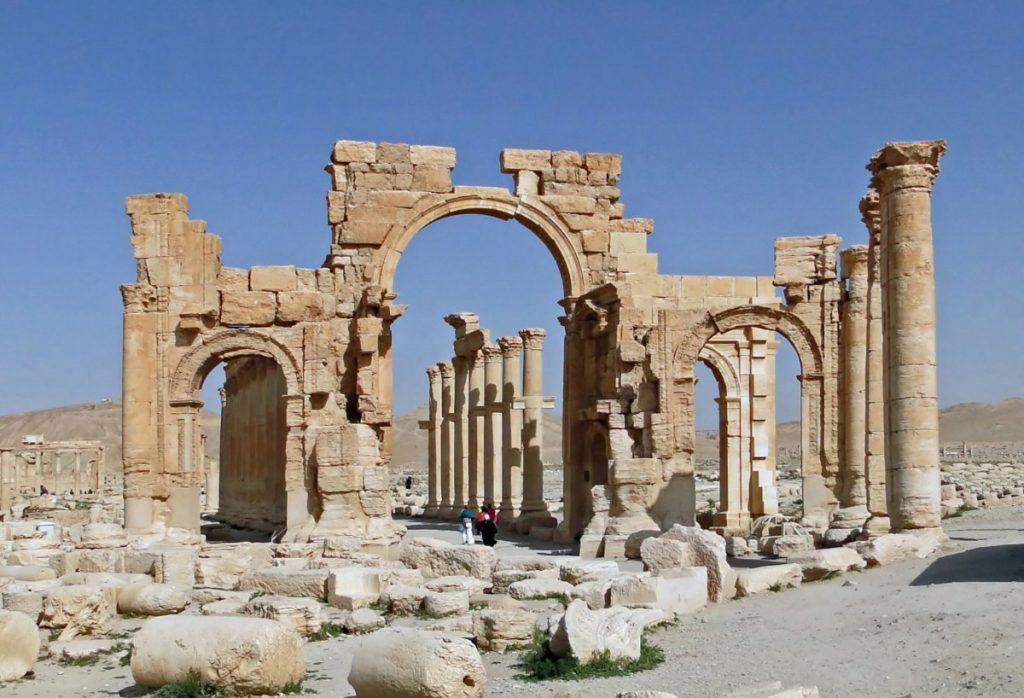

The second stop during our trip was the Arch of Septimius Severus. Constructed during the rule of Emperor Septimius Severus from 193 to 211 AD, it strategically linked the Temple of Bel with the great Colonnade.
Some historical records suggest that the erection of the Arch was to celebrate the Romans’ successful campaign over the Parthians. Interestingly, the arch has occasionally been mistaken as “Hadrian’s Arch,” although Emperor Hadrian had passed away over 50 years before the creation of this extraordinary structure.
From an architectural perspective, the Monumental Arch was a marvel, given its unique double facade, which concealed a 30° bend between the eastern and central parts of the Great Colonnade. The design includes a large central gateway accompanied by a relatively smaller entrance on each side (See photo 1).
The arch was decorated with beautiful stone carvings, depicting flora motifs or geometric patterns like those seen in other arches built across the Roman Empire.
However, in May 2015 ISIS decided to cover the Monumental Arch of Palmyra with explosives, leading to the majority of its destruction with dynamite.
Efforts to recreate the arch are ongoing. In fact, a replica of the central part of the Arch was constructed out of Egyptian Marble in England. This model was first erected on April 19, 2016, in Trafalgar Square, London.
It was then scheduled to be sent to its rightful home, Syria. However, as of today, this move is still pending.
3. The Main Colonnade
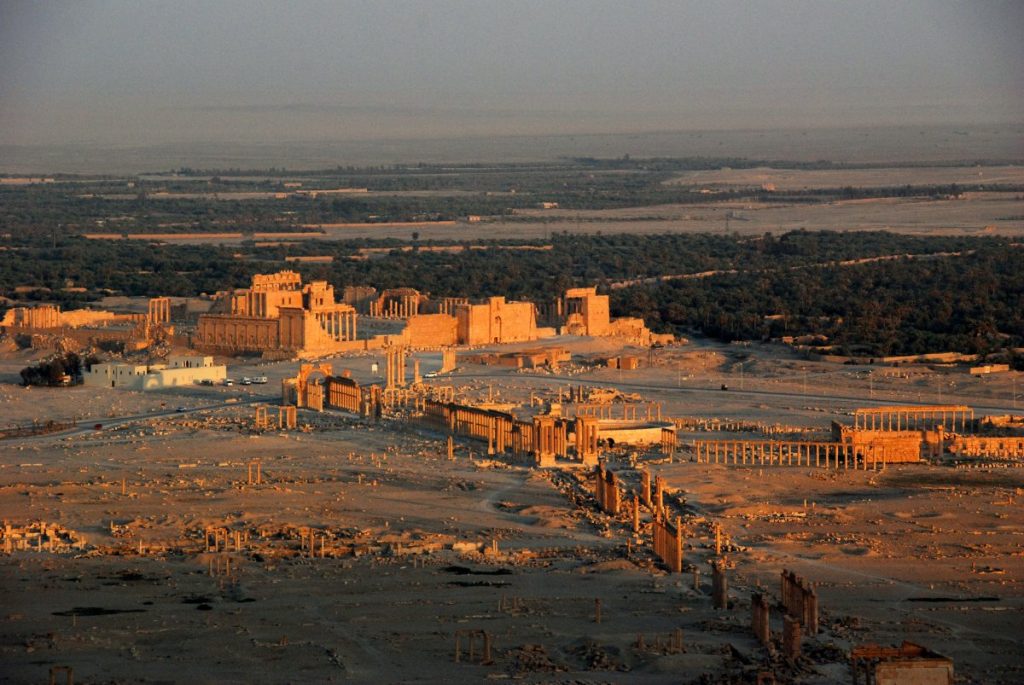
Next, it was time to walk through the majestic colonnade of Palmyra. Once the center of the city’s social life, today, it still stands strong despite the recent issues.
The Colonnade of Palmyra is a grand, straight boulevard that stretches for more than a kilometer, lined on both sides by massive columns. Each column stands at a height of about 9 meters and is made of solid limestone.
It was actually the main “street” of the city, and was surrounded by a variety of buildings, including temples, shops, and residential houses.
Having just visited the Temple of Bel and the Arch, I really appreciated the condition of the colonnade. I felt very lucky to be able to see it with my own eyes, and I tried to explore every bit of it.
4. The Roman Theatre
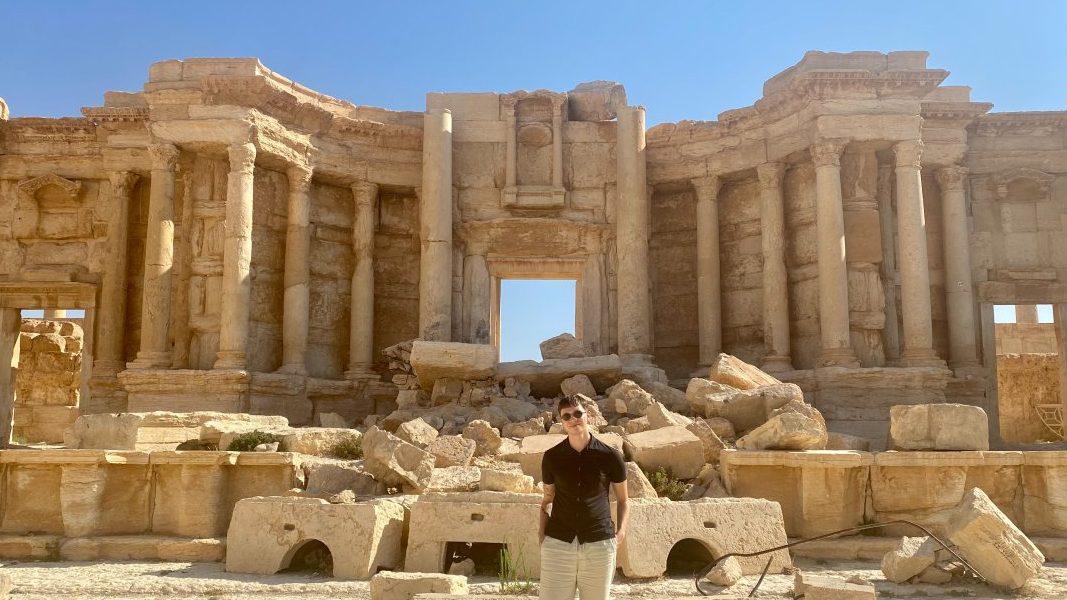
The Roman Theatre of Palmyra is the place where I felt more uncomfortable during my visit to Palmyra. It actually has a very dark story behind it. You might have seen countless photos of this place, but for all the wrong reasons.
The theatre is located in the southwest part of the city. It’s a semi-circular structure with a diameter of about 92 meters, and it could accommodate around 4,000 spectators. The theatre’s design was influenced by the Hellenistic period, with its three horizontal seating sections.
However, the amphitheater was used as an execution base for ISIS. For obvious reasons I will not write the stories I was told about what happened there, but it was horrifying to hear.
I left the amphitheater with very conflicting emotions. On one hand, the structure was very impressive and well-preserved. On the other, it’s recent history is really hard to ignore.
5. The Hypogeum of Three Brothers
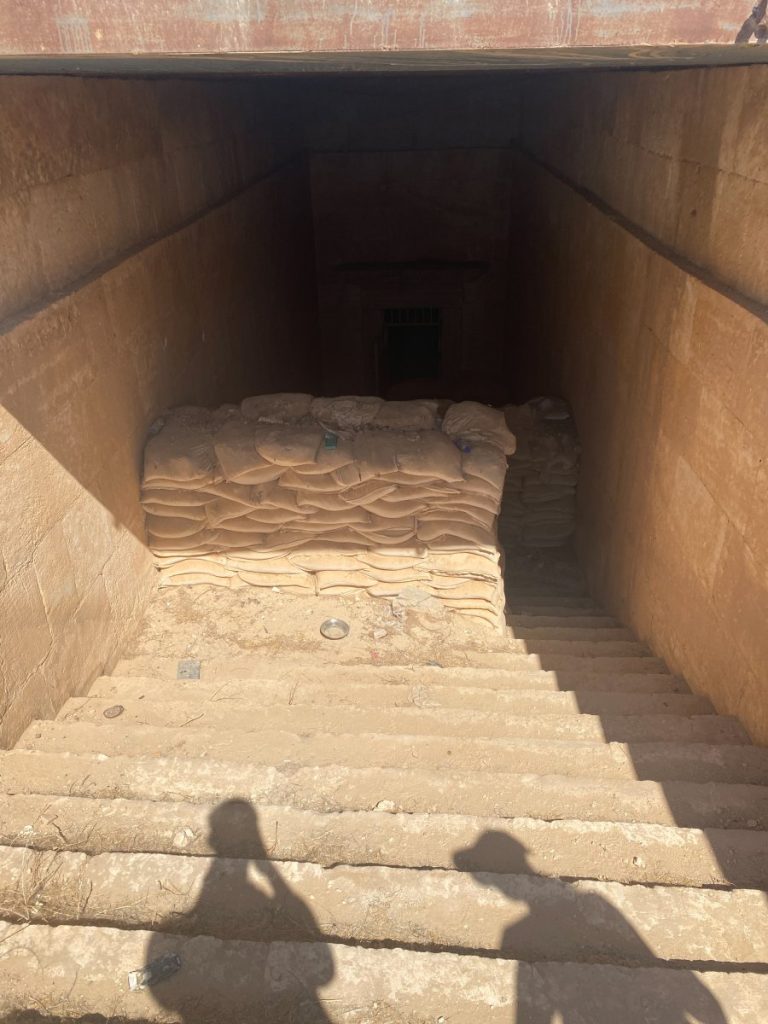
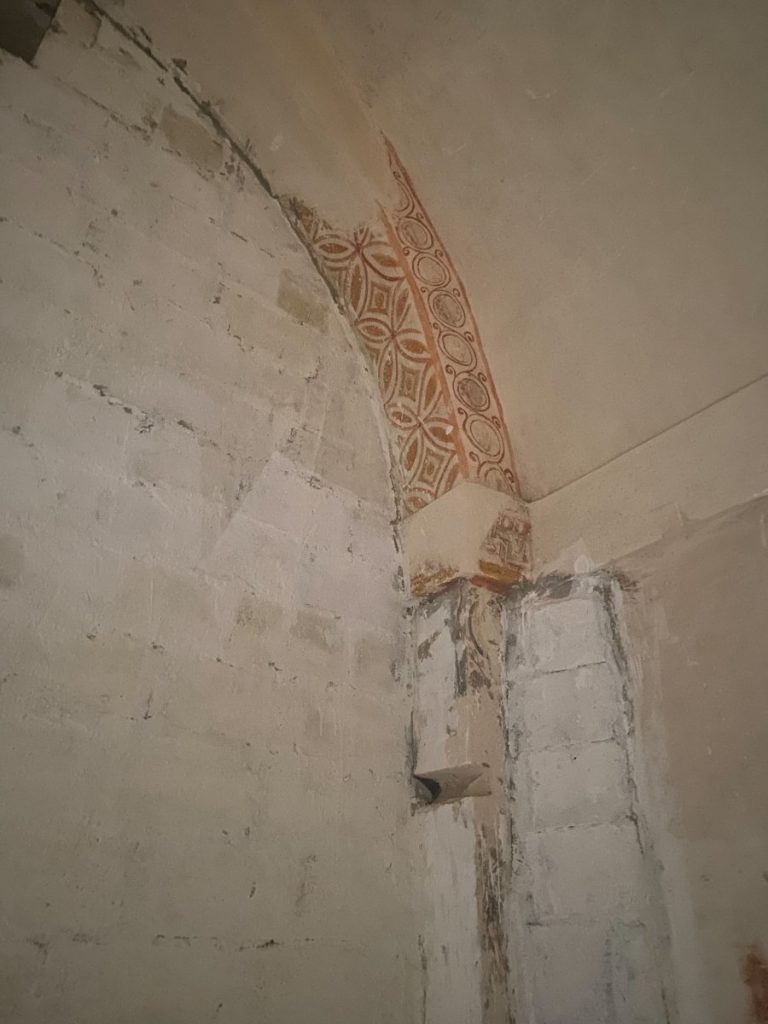
The Hypogeum of Three Brothers was our next stop during our trip. It is basically an ancient burial chamber located on the other side of Palmyra. It was named after the three brothers who commissioned its construction, Atenatan, Yarhai, and Elahbel, prominent figures in Palmyra during the 2nd century AD.
The Hypogeum is an underground structure carved directly into the bedrock. It’s an excellent example of Palmyran funerary architecture, featuring a central chamber with a series of burial niches, arranged along the walls. These niches once held the sarcophagi of the deceased.
Inside the Hypogeum, there used to be a striking fresco that depicted a banquet scene. It was one of the most well-preserved examples of Palmyran painting. However, it was all painted white by ISIS, who used the chambers to get cover from airplane attacks. In fact, the entrance is still covered by sacks that offered cover to the soldiers.
Stepping inside felt exactly like being in an active war zone. Watching the walls covered in white was really painful. I still cannot express in words how I felt.
We were given the choice of proceeding even deeper into the tombs, but our guide told us about a white snake with red eyes she had seen there, so we were not brave enough to continue.
6. The Eqfa Spring and Oasis
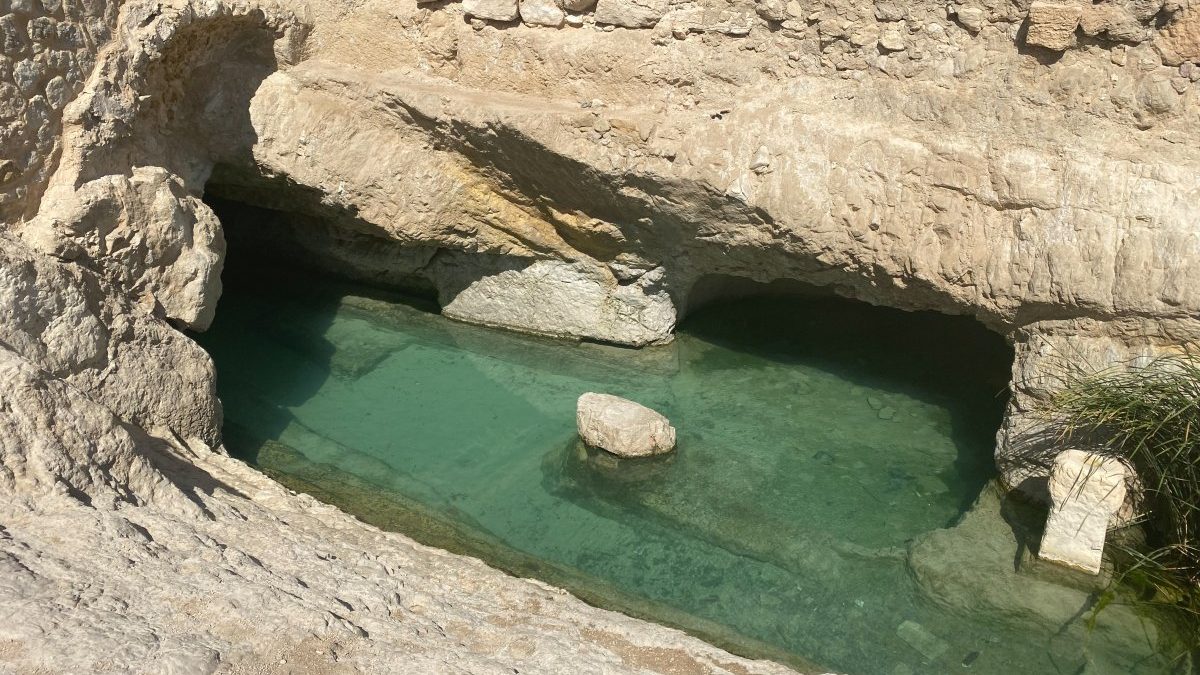
Our last stop when visiting Palmyra was the Eqfa Spring and Oasis. It’s a place of crystal-clear water in the middle of the desert. The palm trees around the landscape and the green surrounding this oasis provide a much-needed relief from the heat.
It’s the perfect spot for a refreshing break, a picnic, or even a short hike. We were told that many people also choose to dive in the spring because it is believed to have healing purposes. However, we didn’t try because it didn’t look so clean.
7. The Palmyra Castle
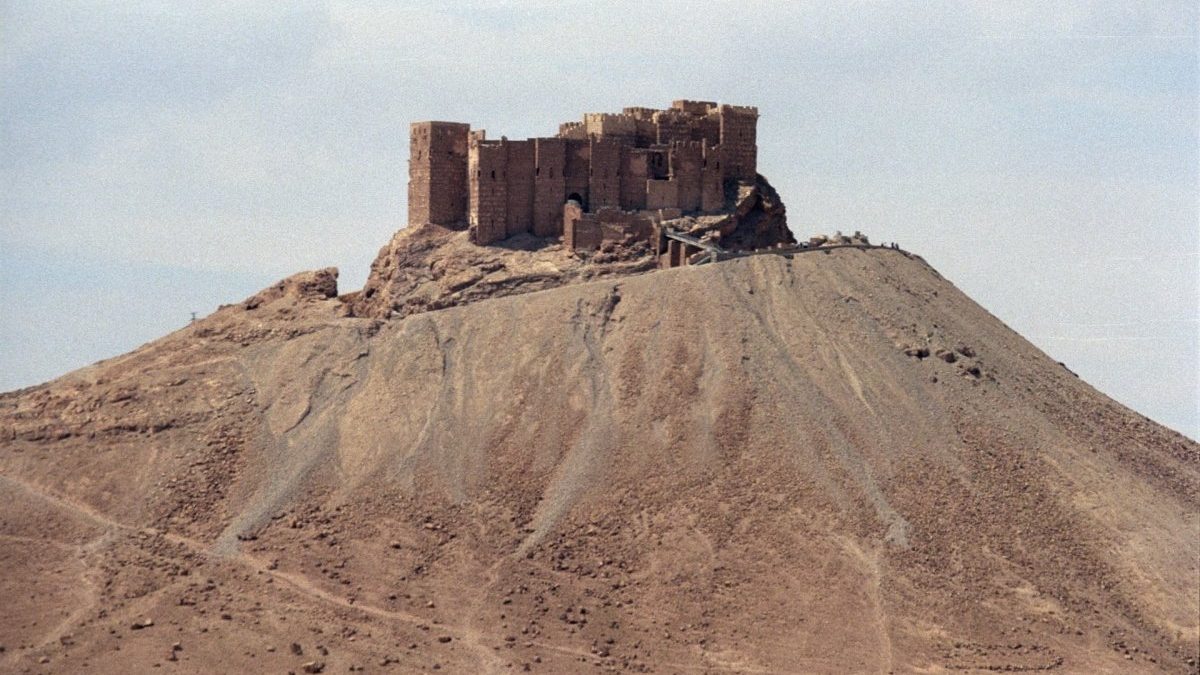
While we were not able to visit this one, I could not finish the guide without mentioning it. Located on top of a hill overlooking the city, the Palmyra Castle provides stunning panoramic views of the entire ancient city and the surrounding desert.
The castle dates back to the 13th century and is named after Fakhr-al-Din II, a Druze prince who expanded the fortress in the 17th century. However, some parts of the castle, such as the underground tunnels, are believed to be much older.
Before the war, people used to climb up to the castle and enjoy the sunset. During the Syrian Crisis, however, the castle was used as a military base. That is the reason why it is no longer possible to explore when visiting Palmyra. However, I hope that I will be able to visit it next time.
Final Thoughts
Palmyra has, undoubtedly, a troubled history. However, I hope this guide encourages you to give it a try (Or, at least, learn more about it). It is a place steeped in history and unique beauty, and It might not be there for long.
Going back, I felt very full with experiences, but also very sceptical. Should I focus on the history of this beautiful place, or that is impossible because of what happened recently? I still have no answer to this question. One thing is for sure, this trip gave me a lot to think about.


